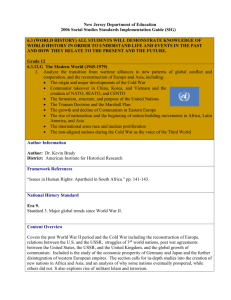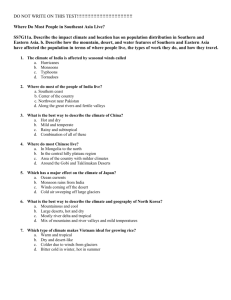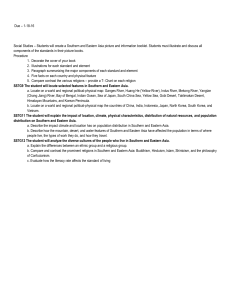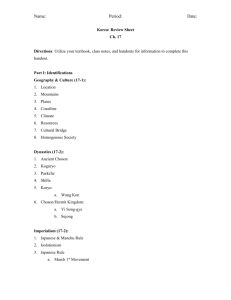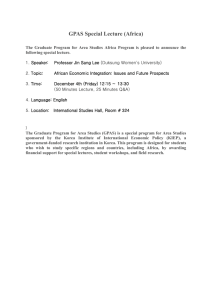The Impact of mountain, desert and water features of Southern and
advertisement
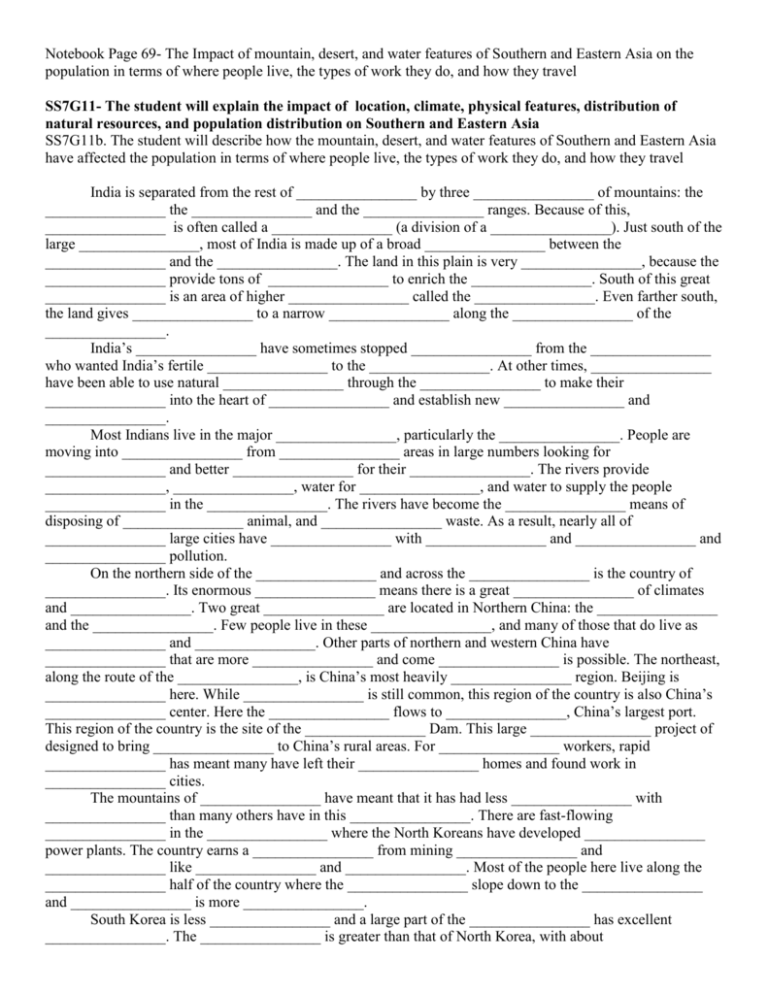
Notebook Page 69- The Impact of mountain, desert, and water features of Southern and Eastern Asia on the population in terms of where people live, the types of work they do, and how they travel SS7G11- The student will explain the impact of location, climate, physical features, distribution of natural resources, and population distribution on Southern and Eastern Asia SS7G11b. The student will describe how the mountain, desert, and water features of Southern and Eastern Asia have affected the population in terms of where people live, the types of work they do, and how they travel India is separated from the rest of ________________ by three ________________ of mountains: the ________________ the ________________ and the ________________ ranges. Because of this, ________________ is often called a ________________ (a division of a ________________). Just south of the large ________________, most of India is made up of a broad ________________ between the ________________ and the ________________. The land in this plain is very ________________, because the ________________ provide tons of ________________ to enrich the ________________. South of this great ________________ is an area of higher ________________ called the ________________. Even farther south, the land gives ________________ to a narrow ________________ along the ________________ of the ________________. India’s ________________ have sometimes stopped ________________ from the ________________ who wanted India’s fertile ________________ to the ________________. At other times, ________________ have been able to use natural ________________ through the ________________ to make their ________________ into the heart of ________________ and establish new ________________ and ________________. Most Indians live in the major ________________, particularly the ________________. People are moving into ________________ from ________________ areas in large numbers looking for ________________ and better ________________ for their ________________. The rivers provide ________________, ________________, water for ________________, and water to supply the people ________________ in the ________________. The rivers have become the ________________ means of disposing of ________________ animal, and ________________ waste. As a result, nearly all of ________________ large cities have ________________ with ________________ and ________________ and ________________ pollution. On the northern side of the ________________ and across the ________________ is the country of ________________. Its enormous ________________ means there is a great ________________ of climates and ________________. Two great ________________ are located in Northern China: the ________________ and the ________________. Few people live in these ________________, and many of those that do live as ________________ and ________________. Other parts of northern and western China have ________________ that are more ________________ and come ________________ is possible. The northeast, along the route of the ________________, is China’s most heavily ________________ region. Beijing is ________________ here. While ________________ is still common, this region of the country is also China’s ________________ center. Here the ________________ flows to ________________, China’s largest port. This region of the country is the site of the ________________ Dam. This large ________________ project of designed to bring ________________ to China’s rural areas. For ________________ workers, rapid ________________ has meant many have left their ________________ homes and found work in ________________ cities. The mountains of ________________ have meant that it has had less ________________ with ________________ than many others have in this ________________. There are fast-flowing ________________ in the ________________ where the North Koreans have developed ________________ power plants. The country earns a ________________ from mining ________________ and ________________ like ________________ and ________________. Most of the people here live along the ________________ half of the country where the ________________ slope down to the ________________ and ________________ is more ________________. South Korea is less ________________ and a large part of the ________________ has excellent ________________. The ________________ is greater than that of North Korea, with about ________________ of the people living in and around the capital city, ________________. People living in or near ________________ have the advantages of ________________, ________________ and ________________ that are harder to find in ________________ areas. While there are cold ________________ and warm ________________, the climate in South Korea is ________________ than that of ________________ because of the ________________. Almost ________________ of the country of ________________ is covered with ________________. This leaves a small ________________ of the land suitable for ________________. The ________________ have created ________________ out of these ________________ by building ________________, putting in ________________, and using different ________________ and farming ________________. Even so, Japan has to ________________ food for its growing ________________. There are many ________________ in Japan. These ________________ are often the cause of ________________. Japan has more ________________ every year than any other place in the ________________. These Japanese people have ________________ to the threat of ________________, even though many cause a lot of ________________. Some parts of the country have developed ________________ around the volcanic areas, and others use the ________________ to warm ________________ for people to ________________. They have to ________________ a lot of food from other ________________. Japan imports ________________ as well. The country has a very highly developed ________________ economy, but no ________________ or ________________. They depend on the world ________________ for ________________ products. Distribution of ________________ throughout ________________ and ________________ Asia plays a major part in determining what sorts of ________________ people do and how ________________ they are able to ________________. A natural resource is something that is ________________ in the ________________ that people need and can use. Fresh water, ________________, ________________, minerals, and ________________ are all examples of ________________. One of the most valuable natural ________________ in this part of the world is rich ________________. All of the countries of southern and eastern ________________ depend on ________________ to feed growing ________________. India and China are able to claim large areas of rich ________________ as an important ________________. However, these countries have a difficult time producing enough ________________ to take care of their rapidly growing ________________. India, China, North Korea and South Korea also have good ________________ of ________________. While this is an important ________________ and ________________ source for all of the ________________ of these ________________, coal ________________ is also a major ________________ of air ________________. Air ________________ is one of the greatest ________________ hazards facing the countries of ________________ and ________________ Asia. Both North and South Korea have a ________________ of ________________ deposits, including ________________ and ________________. South Vietnam is able to mine ________________ for export, as well as ________________ for ________________. Japan, an industrial ________________ on the eastern edge of this ________________, has practically no ________________ at all. For this reason, ________________ must depend on ________________ and ________________ to supply ________________ with all they ________________. 1. How have the mountain ranges in northern India affected the country’s development? 2. Why do so many of the people of India live in the Ganges River Valley? 3. Why do most of the people of North Korea live in the western half of the country? 4. Why do almost 25% of the people in South Korea live in and around Seoul? 5. How have the farmers of japan been able to raise crops in lane that is very mountainous? 6. How do the Japanese feed their people with so little good farmland? 7. Name 3 examples of natural resources found in this region.



